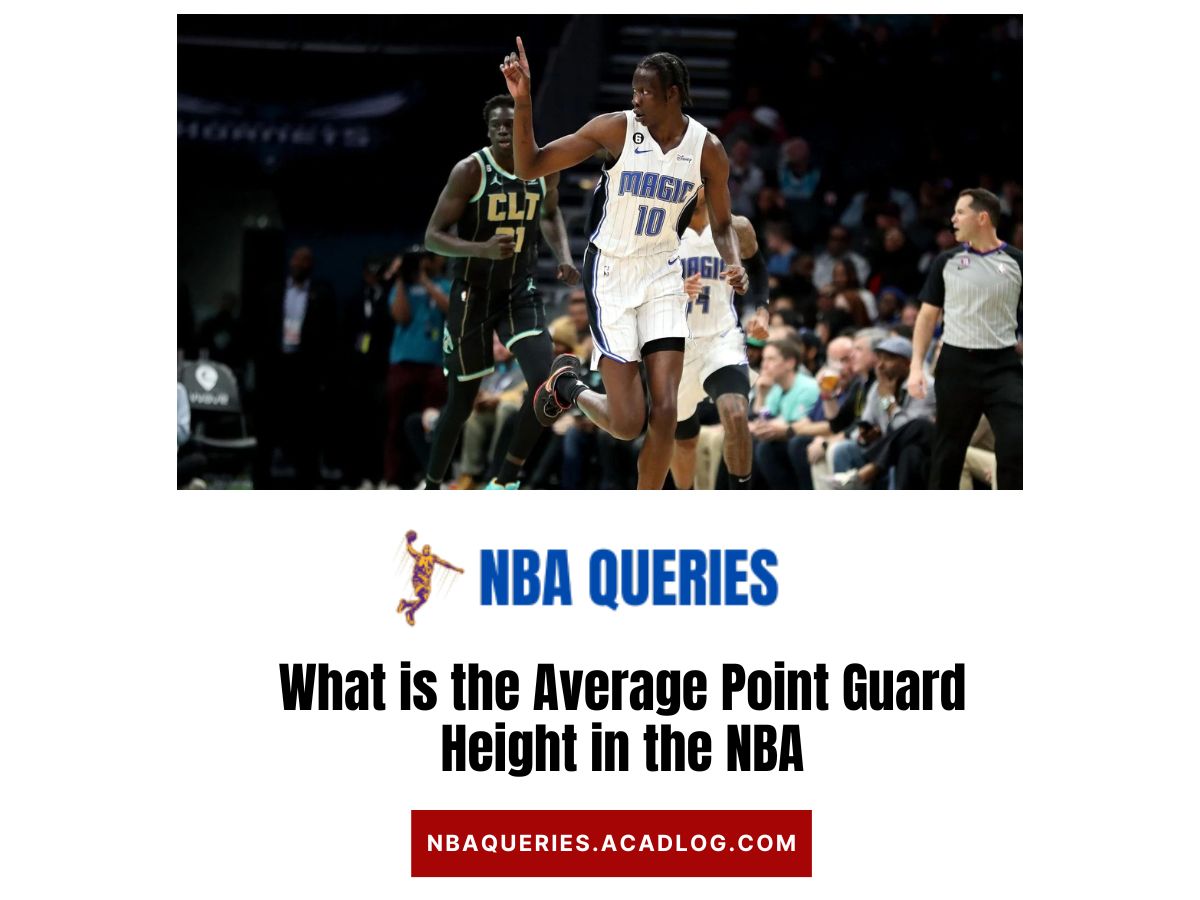Understanding the average height of point guards (PGs) in the NBA offers fascinating insights into the evolution of basketball over the years. This article aims to explore the historical trends, the current state, and the factors influencing the height of NBA point guards to provide a comprehensive overview of the “average PG height in NBA.”
Average Point Guard Height in the NBA: Historical Trends
The journey of point guard heights in the NBA has been dynamic. In the early days of the NBA, around the 1952/53 season, point guards were among the shortest players on the court, with an average height of about 6 feet. This stature remained relatively constant until a notable increase began, peaking in 1987 when the average PG height reached 6’3″. This era saw exceptional tall point guards like Magic Johnson (6’9″) and Reggie Theus (6’7″), who challenged the traditional height norms for the position.
Interestingly, the early ’90s witnessed a slight decrease in the average height of point guards, with notable shorter players like Spudd Webb (5’6″) and Muggsy Bogues (5’3″) making significant contributions to their teams. However, by the 2019/2020 season, the average PG height saw a record of 6’2.5″, partly due to the categorization of versatile players such as LeBron James, Luka Doncic, and Ben Simmons as point guards.
Current Standards for Average PG Height in NBA
As of the most recent data, the average point guard height in the NBA hovers around the 6′ to 6’3″ range. This range reflects a broader acceptance of varying heights for the position, focusing more on skill set, basketball IQ, and playmaking abilities rather than height alone.
The tallest point guards, such as Ben Simmons, now reach up to 6’10”, showcasing the position’s evolving nature. Meanwhile, the presence of shorter players like Facundo Campazzo (5’10”) emphasizes the importance of skills over stature.
Factors Influencing Height Variations
Several factors contribute to the observed variations in point guard heights over the years. Firstly, the changing dynamics and styles of play in the NBA have influenced the physical attributes desired in a point guard. The emphasis on versatility, the ability to shoot from the distance, and defensive capabilities have made taller point guards more favorable in certain strategies.
Additionally, the success of exceptionally tall point guards like Magic Johnson has challenged the conventional wisdom regarding the ideal height for the position, encouraging teams to experiment with taller players in the role.
The Importance of Skills Over Height
Despite these trends, it’s crucial to note that skills, basketball IQ, and understanding of the game remain paramount for point guards. The NBA has seen highly successful point guards across the height spectrum, underscoring that height is just one of many factors that can contribute to a player’s effectiveness in this role.
Read:
Evolution of the Point Guard Role
Historically, point guards were primarily facilitators, tasked with setting up the offense and distributing the ball. Their height, typically shorter than other positions, was offset by their speed, agility, and basketball IQ. However, as the game has evolved, so too has the role of the point guard. Today’s point guards are not just facilitators but also key scorers and defenders. The emergence of “tall” point guards has further blurred the lines between positions, allowing teams to employ more versatile and dynamic offensive strategies.
Impact of Height on Team Dynamics
The height of a point guard can significantly impact team dynamics and strategies. Taller point guards, like Ben Simmons at 6’10”, offer a unique advantage with their ability to see over defenses, creating passing lanes that shorter guards can’t. Additionally, their size can be beneficial on defense, where they can guard multiple positions and disrupt opposing offenses.
However, the success of shorter point guards, such as Chris Paul and Kyle Lowry, emphasizes that leadership, court vision, and basketball intelligence are equally crucial. Their ability to navigate the court, combined with exceptional ball-handling and shooting skills, demonstrates that effectiveness as a point guard is not solely dependent on height.
Future Trends
The future of the point guard position appears to be leaning towards versatility and positionless basketball. With the increasing emphasis on three-point shooting and spacing the floor, point guards of the future might need to possess a combination of shooting skills, playmaking ability, and defensive versatility, regardless of their height. The trend towards taller point guards might continue, but as history has shown, there will always be a place for skilled players who can outthink and outmaneuver their opponents, regardless of size.
Final Thoughts
The average PG height in NBA reflects more than just a number; it embodies the evolution of basketball and the point guard role. From facilitators to scorers and defenders, point guards have expanded their influence on the game, proving that skills often outweigh physical attributes. As the NBA continues to progress, the definition of an ideal point guard will likely continue to change, emphasizing versatility, basketball IQ, and skill set over traditional physical profiles.

